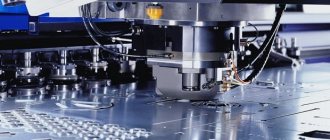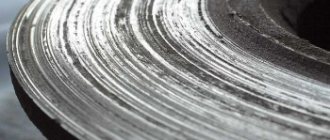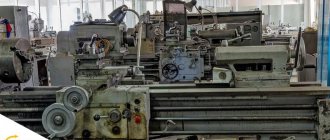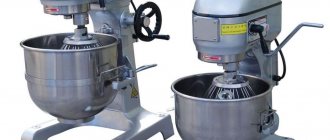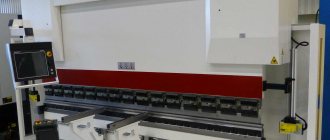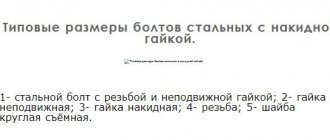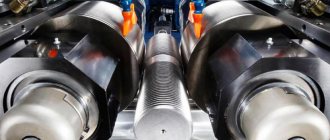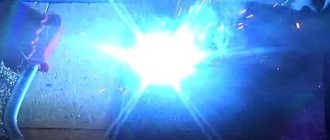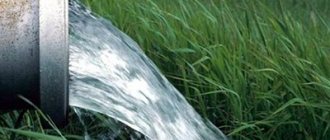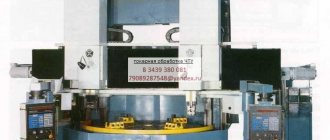Wear detection
Wear, or aging, is a gradual decrease in the performance characteristics of products, components or equipment as a result of changes in their shape, size or physical and chemical properties. These changes occur gradually and accumulate during operation. There are many factors that determine the rate of aging. Negatively affects:
- friction;
- static, pulsed or periodic mechanical loads;
- temperature conditions, especially extreme ones.
The following factors slow down aging:
- Constructive decisions;
- use of modern and high-quality lubricants;
- compliance with operating conditions;
- timely maintenance, scheduled preventative repairs.
Due to a decrease in performance characteristics, the consumer cost of products also decreases.
Features of oxidative wear
This type of wear occurs when a loose film of oxides appears on the surface of rubbing parts, which is quickly removed from the surface as a result of friction. Most engineering materials are prone to oxidation in air at elevated temperatures. Therefore, mechanisms that operate without lubrication and without a cooling system are susceptible to this type of wear of parts.
The greater the rate of destruction of the oxide film and the greater the rate of its formation, the more intense the wear of surfaces.
This type of wear is typical for hinged and bolted joints, various suspension mechanisms, and indeed for all components operating without lubrication.
With increasing friction speed, the temperature of the rubbing surfaces increases. This leads to intensification of destructive processes. An increase in shock loads has a similar effect.
Types of wear
The rate and degree of wear is determined by friction conditions, loads, material properties and design features of products.
Classification of types of wear
Depending on the nature of external influences on the materials of the product, the following main types of wear are distinguished:
- abrasive type - damage to the surface by small particles of other materials;
- cavitation, caused by the explosive collapse of gas bubbles in a liquid medium;
- adhesive appearance;
- oxidative species caused by chemical reactions;
- thermal view;
- fatigue appearance caused by changes in the structure of the material.
Some types of aging are divided into subtypes, such as abrasive.
Abrasive
It consists in the destruction of the surface layer of the material during contact with harder particles of other materials. Characteristic for mechanisms operating in dusty conditions:
- mining equipment;
- transport, road construction mechanisms;
- Agreecultural machines. Agreecultural equipment;
- construction and production of building materials.
Abrasive wear
You can counteract it by using special hardened coatings for rubbing pairs, as well as by promptly changing the lubricant.
Gas abrasive
This subtype of abrasive wear differs from it in that solid abrasive particles move in the gas flow. The surface material crumbles, is cut off, and is deformed. Found in equipment such as:
- pneumatic lines;
- fan and pump blades for pumping contaminated gases;
- domain installation nodes;
- components of solid fuel turbojet engines.
Often, gas abrasive effects are combined with the presence of high temperatures and plasma flows.
Download GOST 27674-88
Waterjet
The effect is similar to the previous one, but the role of the abrasive carrier is performed not by a gaseous medium, but by a liquid flow.
Water-abrasive type of wear
The following are susceptible to this effect:
- hydrotransport systems;
- hydroelectric power station turbine units;
- components of washing equipment;
- mining equipment used for washing ore.
Sometimes waterjet processes are aggravated by exposure to an aggressive liquid environment.
Cavitation
Pressure drops in the liquid flow flowing around the structure lead to the appearance of gas bubbles in the zone of relative rarefaction and their subsequent explosive collapse with the formation of a shock wave. This shock wave is the main active factor in the cavitation destruction of surfaces. Such destruction occurs on the propellers of large and small ships, in hydraulic turbines and technological equipment. The situation can be complicated by exposure to an aggressive liquid medium and the presence of an abrasive suspension in it.
Cavitation type of wear
Adhesive
With prolonged friction, accompanied by plastic deformations of the participants in the rubbing pair, periodic convergence of surface areas occurs at a distance that allows the forces of interatomic interaction to manifest themselves. The interpenetration of atoms of substance of one part into the crystalline structures of another begins. Repeated occurrence of adhesive bonds and their interruption lead to the separation of surface zones from the part. Loaded rubbing pairs are subject to adhesive aging: bearings, shafts, axles, sliding bearings.
Adhesive type of wear
Thermal
The thermal type of aging consists of the destruction of the surface layer of a material or a change in the properties of its deep layers under the influence of constant or periodic heating of structural elements to the plasticity temperature. Damage is expressed in crushing, melting and changing the shape of the part. Characteristic for highly loaded components of heavy equipment, rolls of rolling mills, hot stamping machines. It can also occur in other mechanisms when the design conditions for lubrication or cooling are violated.
Fatigue
Associated with the phenomenon of metal fatigue under variable or static mechanical loads. Shear stresses lead to the development of cracks in the materials of parts, causing a decrease in strength. Cracks in the near-surface layer grow, unite and intersect with each other. This leads to erosion of small scale-like fragments. Over time, this wear can cause the part to fail. It is found in components of transport systems, rails, wheel sets, mining machines, building structures, etc.
Fatigue wear
Fretting
Fretting is the phenomenon of microfracture of parts in close contact under conditions of low-amplitude vibration - from hundredths of a micron. Such loads are typical for rivets, threaded connections, keys, splines and pins connecting parts of mechanisms. As fretting aging increases and metal particles peel off, the latter act as an abrasive, aggravating the process.
Fretting
There are other, less common specific types of aging.
Some features of erosive wear
When considering the types of friction and wear, one should not lose sight of the so-called erosive wear. In simple terms, this is the destruction of surfaces under the influence of the environment.
In engineering, this concept refers to the destruction of the surfaces of machine parts and mechanism components under the influence of environmental factors. Such influencing factors include air and liquid flows, steam or various gases. The cause of wear is, as before, friction. Only in this case, the surface is affected not by abrasive particles, but by gas or liquid molecules.
During this process, microcracks appear. Molecules of liquid and steam under high pressure penetrate into them and contribute to the destruction of all surface layers of products.
The liquid or steam may also contain abrasive particles in suspension. In this case, such a mixture will cause abrasive-erosive destruction and wear.
Types of wear
The classification of types of wear and tear from the point of view of the physical phenomena that cause it in the microcosm is complemented by systematization according to the macroscopic consequences for the economy and its subjects.
In accounting and financial analytics, the concept of wear and tear, which reflects the physical side of phenomena, is closely related to the economic concept of depreciation of equipment. Depreciation refers to both the decline in value of equipment as it ages and the attribution of a portion of that decline to the cost of the products produced. This is done with the aim of accumulating funds in special depreciation accounts for the purchase of new equipment or partial improvement of it.
Depending on the causes and consequences, they distinguish between physical, functional and economic.
Physical deterioration
This refers to the direct loss of the design properties and characteristics of a piece of equipment during its use. Such loss may be either total or partial. In case of partial wear, the equipment undergoes restoration repairs, returning the properties and characteristics of the unit to the original (or other pre-agreed) level. If the equipment is completely worn out, it must be written off and dismantled.
In addition to degree, physical wear and tear is also divided into types:
- First. Equipment wears out during planned use in compliance with all standards and regulations established by the manufacturer.
- Second. Changes in properties are due to improper operation or force majeure factors.
- Emergency. Hidden changes in properties lead to sudden emergency failure.
The listed varieties apply not only to the equipment as a whole, but also to its individual parts and assemblies
Functional wear
This type is a reflection of the process of obsolescence of fixed assets. This process consists of the appearance on the market of the same type, but more productive, economical and safe equipment. The machine or installation is still physically in good working order and can produce products, but the use of new technologies or more advanced models appearing on the market makes the use of outdated ones economically unprofitable. Functional wear can be:
- Partial. The machine is unprofitable for a complete production cycle, but is quite suitable for performing a certain limited set of operations.
- Full. Any use results in damages. The unit is subject to write-off and dismantling
Functional wear
Functional wear is also divided according to the factors that caused it:
- Moral. Availability of technologically identical, but more advanced models.
- Technological. Development of fundamentally new technologies for the production of the same type of product. Leads to the need to rebuild the entire technological chain with a complete or partial update of the composition of fixed assets.
If a new technology appears, as a rule, the composition of the equipment is reduced and the labor intensity decreases.
Economic wear and tear
In addition to physical, temporary and natural factors, the safety of equipment characteristics is also indirectly influenced by economic factors:
- Fall in demand for manufactured goods.
- Inflationary processes. Prices for raw materials, components and labor resources are rising, while at the same time there is no proportional increase in prices for the company's products.
- Price pressure from competitors.
- An increase in the cost of credit services used for operating activities or for updating fixed assets.
- Non-inflationary price fluctuations in raw materials markets.
- Legal restrictions on the use of equipment that does not meet environmental standards.
Economic wear and tear
Both real estate and production groups of fixed assets are susceptible to economic aging and loss of consumer qualities. Each enterprise maintains registers of fixed assets, which take into account their depreciation and the progress of depreciation accumulations.
Fatigue wear and its characteristics
The types of wear and geometry violations are very diverse. Fatigue chipping of the surfaces of parts causes many problems for design and mechanical engineers. This “disease” is very insidious. The phenomenon of fatigue chipping occurs in parts that operate for a long time under conditions of alternating loads. This is a characteristic “disease” of gear joints.
This type of wear is accompanied by the initiation of cracks on the surface and their penetration deep into the product. A whole network of such microcracks appears on a small surface area. Under the influence of pressure and temperature, small scattered pieces of metal peel off from the main body and fall off. An important role in this process is played by lubricant (oil), which penetrates microcracks and promotes destruction.
The main reasons and ways to determine wear
To determine the degree and causes of wear and tear, a commission on fixed assets is created and operates at each enterprise. Equipment wear is determined in one of the following ways:
- Observation. Includes visual inspection and complex measurements and tests.
- According to service life. It is defined as the ratio of the actual period of use to the standard one. The value of this ratio is taken as the amount of wear in percentage terms.
- a comprehensive assessment of the condition of an object is made using special metrics and scales.
- Direct measurement in money. The cost of acquiring a new similar unit of fixed assets and the cost of restoration repairs are compared.
- profitability of further use. The reduction in income is estimated taking into account all the costs of restoring properties in comparison with the theoretical income.
Which method to use in each specific case is decided by the fixed assets commission, guided by regulatory documents and the availability of source information.
Consequences
Due to wear and tear, the productivity of equipment and machines decreases. This is due to downtime, repairs, and additional maintenance. In addition, there is a certain impact on technical parameters. And only for the worse. For example, the processing accuracy of metal-cutting equipment deteriorates. Because of this, it is necessary to check and adjust devices more often. And we shouldn’t forget about the simply increased yield of defective products. For example, it is believed that the efficiency of machines can decrease by up to 25% over 10 years of operation.
Accounting methods
Depreciation charges, designed to compensate for the aging processes of equipment, can also be determined using several methods:
- linear or proportional calculation;
- reducing balance method;
- by total period of production use;
- in accordance with the volume of products produced.
The choice of methodology is made during the creation or deep reorganization of an enterprise and is enshrined in its accounting policies.
Operation of equipment in accordance with rules and regulations, timely and sufficient contributions to depreciation funds allow enterprises to maintain technological and economic efficiency at a competitive level and delight their consumers with quality goods at reasonable prices.
How to influence the indicator?
Wear and tear of structures, equipment, components and parts is inevitable. But it is quite possible to extend this process. The actual value depends on the resource and service life. The first parameter is determined by the operating time, while the second is the calendar duration of operation. Usually, when creating an object, it is indicated/calculated how long it can work. For example, a car is guaranteed for 100 thousand kilometers or 5 years. But additional influence is exerted by the state of the environment, the presence of peak loads, the frequency and quality of maintenance/repair, the mode and intensity of operation. By keeping all these indicators within reasonable limits, you can achieve significant results.
